Mother Nature never fails to surprise us with something extraordinary and unusual from time to time. Breathtaking beauty, cascading waterfalls, snow-capped mountains, and pristine blue rivers are a common sight. However, there will always be news about something completely different that will surely grab eyeballs. From frozen methane bubbles in Canada to Blood Waterfalls in Antarctica, these bizarre phenomena will surely leave your mouth wide open in awe and ignite the explorer in you.
1. Bioluminescence

Bioluminescence is the emission of light by living organisms, such as bacteria, fungi, algae, plankton, fish, and insects. Bioluminescence can be seen in various places around the world, such as the glowing waves of the Maldives, the blue fireflies of Japan, the neon mushrooms of Brazil, and the sparkling plankton of Australia. Bioluminescence is usually a result of a chemical reaction that produces energy and light, and it can serve different purposes, such as attracting mates, luring prey, or escaping predators.
2. Frozen methane bubbles, Canada
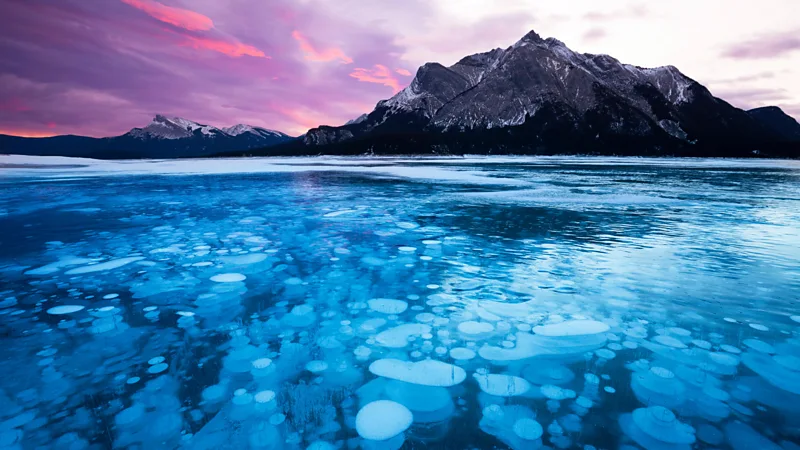
They look otherworldly, like flying saucers that dropped into the water and froze, or ancient, ice-encapsulated jellyfish. In fact, these icy circles are frozen methane bubbles – pockets of gas that, when trapped underwater and frozen, form a spectacular landscape.
Found in winter in high northern latitude lakes like Lake Abraham in Alberta, Canada, these gas bubbles are created when dead leaves, grass and animals fall into the water, sink and are eaten by bacteria that excrete methane. The gas is released as bubbles that transform into tens of thousands of icy white disks when they come into contact with frozen water, Quora user Mayur Kanaiya explains.
It’s a stunning, but potentially dangerous sight. This potent greenhouse gas not only warms the planet, but also is highly flammable. Come spring, when the ice melts, the methane bubbles pop and fizz in a spectacular release – but if anyone happens to light a match nearby, the masses of methane will ignite into a giant explosion.
Curious travellers can see these gassy hiccups in lakes across Canada’s Banff National Park, or in the Arctic Ocean off Siberia, where researchers have found gargantuan gas bubbles as large as 900m across.
3. Blood Falls (Antarctica)

As the name suggests, Blood Falls is a waterfall which shoots blood-red water into a river. It was first seen in the year 1911 in Eastern part of Antarctica – in the McMurdo Dry Valley. The sight is a perfect backdrop for a horror film: creepy, mysterious and of course bloody. Previously, it was believed that red algae were causing the water to change its colour and turn blood-red. Though this hypothesis was never proved.
The mystery of Blood Falls was longstanding and was finally solved in 2017. Thanks to research conducted by the University of Alaska Fairbanks, the true origin of the so-called blood was revealed to be “oxidized iron in brine saltwater,” as reported by Forbes. This is the same procedure which caused iron to turn red due to rusting.
4. Fairy Circles (Namibia)

The Namib Desert in Namibia is unlike any other desert. There are eerie circular patches spread all across the desert (an area of 2500 km). These bare soil patches are popularly known as fairy circles. The mystery behind this was solved only recently. In 2017, Corina Tarnita, a mathematician stated that the patches are a combination of 2 things. One, the presence of vegetation with the absence of water. This makes the plants compete for resources and eventually disappear, leaving patches. Second, the patches are then taken over by termites. So it is the complex ecosystem that results in such a bizarre phenomenon.
5. Rainbow mountains

Rainbow mountains are mountains that have multicolored stripes or patterns on their slopes, creating a stunning visual effect. Rainbow mountains can be found in different parts of the world, such as China, Peru, Iran, and Argentina. Rainbow mountains are formed by different geological processes, such as sedimentation, erosion, oxidation, and mineralization, that create layers of different colors and textures. Rainbow mountains are best seen during sunrise or sunset, when the sunlight enhances their hues and contrasts.
6. Danakil Depression Zone, Ethiopia

This uninhabitable landscape is one of Ethiopia’s top tourist attractions. Teeming with hot springs, pools of acid, steaming fissures and mountains of salt, Danakil Depression Zone seems like a different planet entirely. It’s one of the hottest places on Earth (sometimes reaching up to 122 degrees) and sits more than 400 feet below sea level. Whatever visitors do, touching the bubbling water is not an option — it reaches 212 degrees and is more acidic than battery acid.
7. Death Valley National Park, California, USA
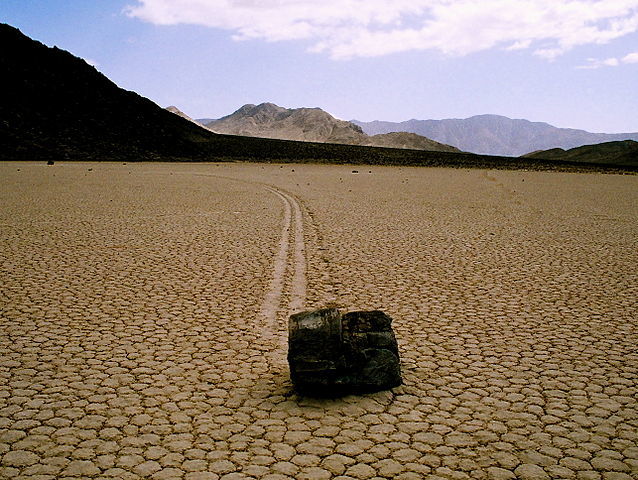
It’s a natural phenomenon where rocks move along the valley floor without animal or human intervention leaving tracks behind. Rocks with rough bottoms leave straight tracks, while rocks with smooth bottoms wander. While the rocks have been studied since the 1990s, the real reason for their movement was identified in 2014 using time lapse photography: it’s a careful balance of strong winds, water and ice, and the phenomenon is called ‘ice shove’.
8. Hokkaido’s Frost Flowers
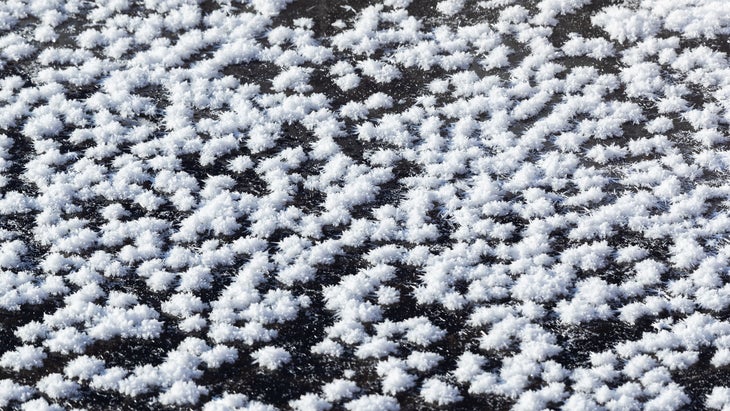
In winter on Hokkaido, Japan’s northernmost island, even as temperatures in Akan-Mashu National Park drop to minus 4 degrees Fahrenheit, Lake Akan is seemingly abloom with life in the form of an endless ethereal meadow of ice flowers. These beautiful blooms on the lake’s surface, known as frost flowers, sprout when the temperature drops quickly, causing a drastic difference between the cold air and the warmer ice surface. When the mist in the air freezes and hits the ice, it gets crystallized.
The ice crystal patches are piled in layers and form delicate patterns, looking like real flower petals. Meteorologists have found that this is most likely to occur when three conditions are met: the surface of the lake is frozen with a thin, clear layer of ice and no snow; the air temperature is below 5 degrees; and there’s no wind.
9. Brazil’s Bioluminescent Mushrooms
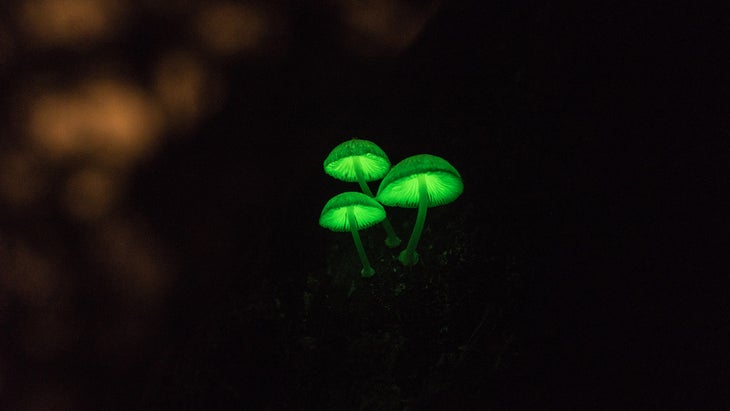
Brazil’s Atlantic Forest, teeming with biodiversity as impressive and unique as its larger Amazon rainforest, contains about 20 species of bioluminescent fungi. These mushrooms flourish in the humidity and grow on tree bark or on tree trunks and fallen branches that line the forest floor. By day you wouldn’t take a second glance at these tiny mushrooms, but at night these fungi glow due to a chemical reaction between them and the decaying wood on which they grow.
Scientists only recently discovered why this happens: the fungi produce light to attract insects and spiders that will then help spread their spores throughout the forest.
10. Eternal Flame Falls
/https://tf-cmsv2-smithsonianmag-media.s3.amazonaws.com/filer_public/28/21/28216144-b32c-4619-bffc-f9652b460d99/eternal_flame_falls.jpeg)
This small, bucolic waterfall in Western New York has one highly photogenic feature: a grotto lit by a dancing orange flame. The flame, which is about eight inches high, is fueled by natural gas seeping from deep underground. Researchers at Indiana University studying the flame believe the gas originates from the Rhinestreet Shale, a formation dating to the Upper Devonian period, some 380 million years ago. The gas reaches the surface, a quarter-mile above, through cracks created by tectonic activity. The flame is visible year-round, but sometimes it must be re-lit.












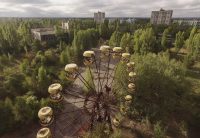

Leave a comment